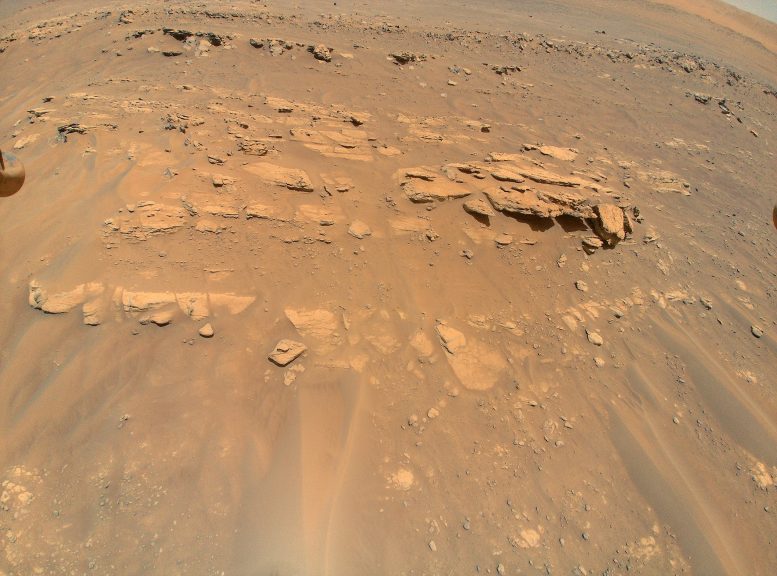NASA’s Ingenuity Helicopter Flies at a Lower Altitude Than Ever Before – Captures a Mars Rock Feature in 3D
The rotorcraft captures nuances of rocky outcrop during aerial reconnaissance.
NASA’s Ingenuity Mars Helicopter provided a 3D view of a rock-covered mound during its 13th flight on September 4. The plan for this reconnaissance mission into the “South Seítah” region of Mars’ Jezero Crater was to capture images of this geologic target – nicknamed “Faillefeu” (after a medieval abbey in the French Alps) by the agency’s Perseverance rover team – and to obtain the color pictures from a lower altitude than ever before: 26 feet (8 meters).
About 33 feet (10 meters) wide, the mound is visible just north of the center of the image, with some large rocks casting shadows. Stretching across the top of the image is a portion of “Artuby,” a ridgeline more than half a mile (900 meters) wide. At the bottom of the image, and running vertically up into the middle, are a few of the many sand ripples that populate South Seítah.
Best viewed with red-blue glasses, this stereo, or 3D, view (also called an anaglyph) was created by combining data from two images taken 16 feet (5 meters) apart by the color camera aboard Ingenuity.
More About Ingenuity
The Ingenuity Mars Helicopter was built by JPL, which also manages the operations demonstration activity during its extended mission for NASA Headquarters. It is supported by NASA’s Science, Aeronautics Research, and Space Technology mission directorates. NASA’s Ames Research Center in California’s Silicon Valley, and NASA’s Langley Research Center in Hampton, Virginia, provided significant flight performance analysis and technical assistance during Ingenuity’s development. AeroVironment Inc., Qualcomm, and SolAero also provided design assistance and major vehicle components. Lockheed Martin Space designed and manufactured the Mars Helicopter Delivery System.
More About Perseverance
A key objective for Perseverance’s mission on Mars is astrobiology, including the search for signs of ancient microbial life. The rover will characterize the planet’s geology and past climate, pave the way for human exploration of the Red Planet, and be the first mission to collect and cache Martian rock and regolith. Read More

No comments